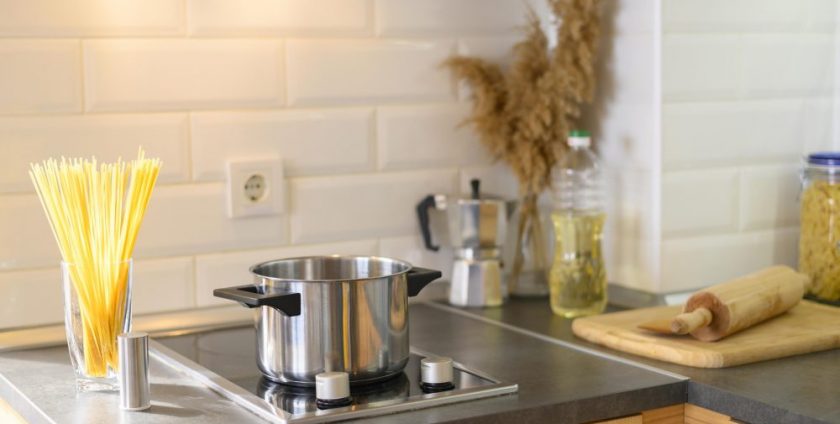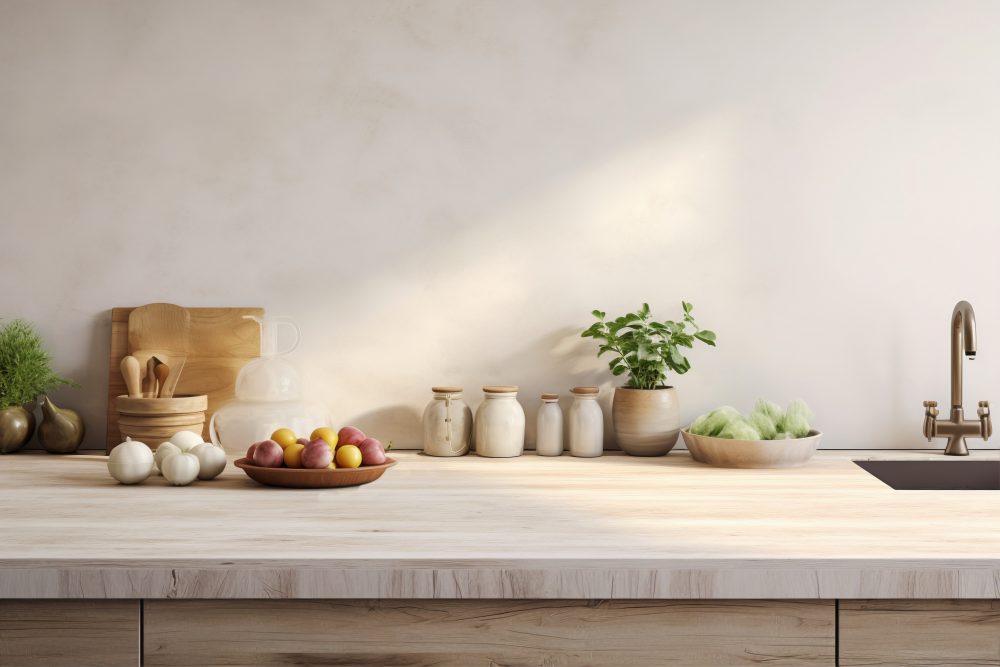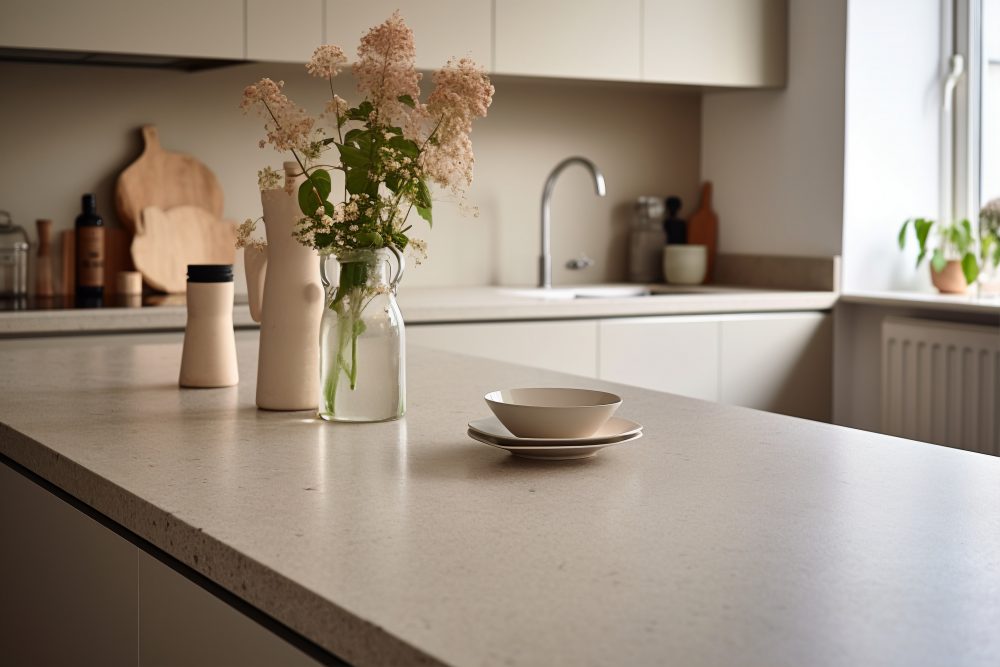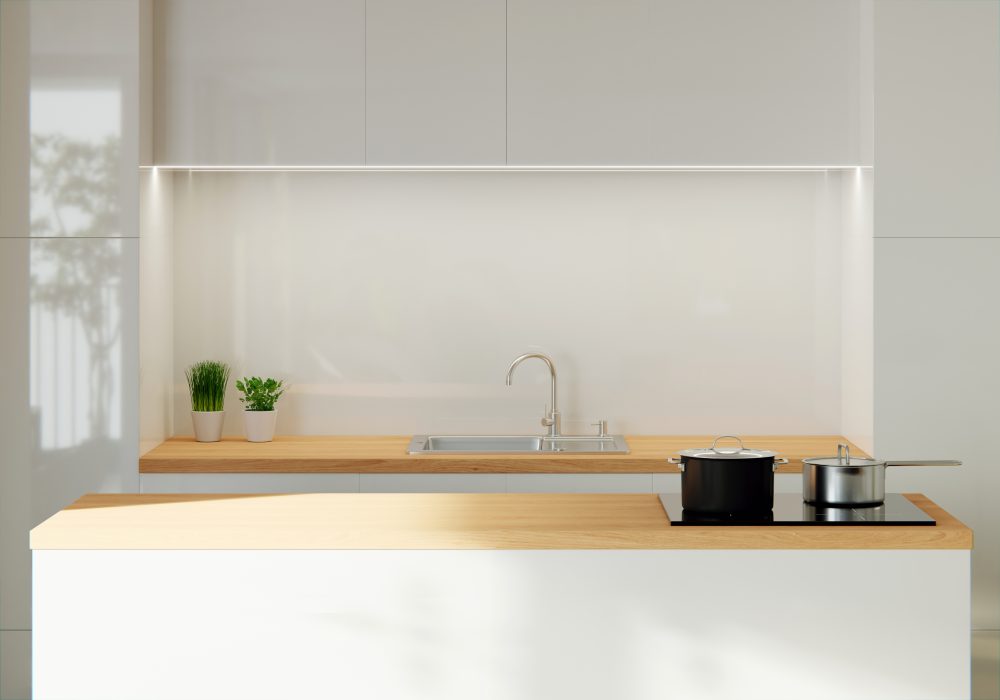
- By: Ryo
- Tags: countertop, kitchen design
- Category: Kitchen Countertops
- 0 comment
Countertop edge details can be some of the most important aspects home owners need to be aware of before making a confirmed choice. Here are 4 important details to keep in mind.
Countertop Edge Details #1: Ensuring Suitable Material Choice

The only interactive decisive factor affecting aesthetics and functionality in the choice of countertop edges in the home kitchen is material suitability. Material differences affect the edge profiles in which durability and maintenance come to play. Natural stones as granite and quartz are highly versatile and allow for intricate designs on the edges without damaging the structure. For this reason, these materials resist chipping and scratching — they can be ideal for homes where the kitchen is going to be in high use.
Softer materials such as laminate or solid surface countertops may be limited to simpler edge profiles such as eased or square edges because they are prone to damage. Laminate is economical but typically lacks the durability that would be required by a more complicated edge and may chip at a sharp corner. Apart from this, the thickness of the countertop might decide whether an edge style would be appropriate or not. Thicker countertops welcome a more dramatic edge profile to add extra visual appeal while thinner ones might be at their best if simpler designs are used so as not to overwhelm the space.
Material choice also impacts maintenance. While polished granite withstands spills and stains well, some laminates are far more sensitive when it comes to scratches and discolouration. Finally, matching up the right material to your countertop edges will add visual appeal to your kitchen while the surfaces stay functional and durable to serve the demands of daily cooking and entertaining. Understanding of different materials and various styles in edges would be the way to maintain a balance between beauty and practical use in kitchen design.
Countertop Edge Details #2: Being Aware Of Cost

Cost consideration is one of the most critical parameters in selecting countertop edges for home kitchens. Prices vary regarding the design’s complexity, type of material used and mode of installation involved. Simpler profiles include square or eased edges and these tend to be lower in price because their manufacturing process and mode of installation are relatively simple. These styles take less labour, are faster to make and are cheaper for the home owner.
The more complicated the edge profile usually means the more costly it is. This is because such designs take a little more skill and detail — making material and labour costs higher. Furthermore, the type of countertop will influence the overall cost of edge profiling. While it is true that sophisticated edge profiles can be made on natural stones as granite and quartz, they tend to be generally more expensive than laminate based options. Another important thing one should consider is the cost — a more durable edge might be able to resist wear and tear for a longer period and save you money in future repairs or replacement.
Also, consider your kitchen’s design aesthetic and how it fits into your budget Trying to make a more beautiful edge, it can increase the value of your home overall. Ultimately, balancing your budget with the look you want and functionality will facilitate making the right decision in choosing an ideal countertop edge for your kitchen. Knowing these cost factors allows home owners to create an attractive yet functional kitchen within their financial objectives.
Countertop Edge Details #3: Functionality And Safety

When designing a home kitchen, the functionality and safety of countertop edges can either make or break daily use and aesthetics as a whole. Functionality pertains to how an edge profile enhances the usability of the kitchen by including ease of cleaning and durability. Flat or square edges would be a good example since they offer a sleek, modern look that is easy to wipe down — great for busy kitchens.
On the contrary, rounded edges are much safer because the sharp corners that can cause injury, particularly when one has young children or elderly people living in the house can be avoided. These rounded edges chip less and have a softer look that is more inviting. Safety in the kitchen is the most vital issue and such edges minimise the danger aspects that protects family members from cuts and bruises and reduces the occurrence of accidents while preparing a meal or cleaning up after one. Again, material matters — granite and quartz are substantial materials that could bear day-to-day wear and tear and offer such intricate edge profiles that could provide total safety without compromising on style.
Furthermore, selecting edges that resist discolouration by stains and are easy to clean allows the hygiene factor to be prevalent and create a healthier cooking environment. Finally, the countertop edge needs to balance aesthetic appeal with practical functionality — it has to provide safety without losing the beauty of the overall design of the kitchen. The care of selection guarantees that it remains a safe and inviting area both for family and guests.
Countertop Edge Details #4: Available Edge Profiles

The right edge profile of the kitchen countertop is very important; it borders between functional and aesthetic attributes. Different edge profiles are meant for different styles and practical needs. A square or flat edge remains the most popular due to its modern and clean lines, but with all the minimalist look, corners chip off pretty easily. By contrast, the beveled edge keeps an angled cut, lending an air of sophistication, but remaining very easy to clean.
For families with children, the good choice would be the bullnose edge, which has totally rounded corners for soft-looking and protective features against injury. The ogee edge is a bit more ornamental in nature, providing an elegant profile with intricate curves, hence suitable for traditional or classic kitchen designs. On the other hand, this ogee may be more labor-intensive in cleaning. The eased edge boasts a slightly rounded finish, which embodies the best of both square and rounded edges. This edge can give a modern look with the added safety of the rounded corners.
Material suitability also plays an important role. Elaborate edges can be possible with durable materials such as granite or quartz, while options will be limited with laminate. Maintenance may also be very different; whereas more basic profiles offer much easier cleaning than complex designs. The cost is yet another important variable, for the simple reason that basic edges are typically less expensive than high-profile ones due to the more labor and material involved.
Finally, the visibility of seams might be influenced by the type of edge style if some profiles can mask them, especially on solid surfaces. In general, choosing the right edge profile can contribute to the design of the kitchen while supporting the functional requirements and lifestyle of the owners.
SIGN UP FOR KITCHEN DESIGN IDEAS:
Join over 5,000 homeowners subscribed to our newsletter!